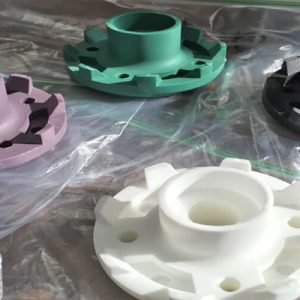Cast urethane or polyurethane is an important process used to make rubber and plastic parts. In fact, Urethane casting products are widely used in different applications and industries. How can you tell whether cast urethane is effective? These are some of the advantages of cast urethane products.
Benefits of Cast Urethane Products
Cheaper Cost
The truth is that cast urethane products are cheaper as compared to those made with additive manufacturing. That is the case when you require a lot of prototypes. As you know, additive manufacturing needs several builds to create a larger prototype, which increases the cost per unit. Fortunately, with the cast urethane procedure, it is possible to create mold parts continuously.
Reduced Tooling Cost
The silicone molds can be used to make cast urethane parts. You should note that silicone molds are cheaper than steel or aluminum tools that are widely used in injection molding. Ideally, you can find urethane parts cost thousands of dollars. However, products made through injection mold tooling are more expensive.
Reduced Tooling Lead Time
Ideally, the lead time for tooling in making cast urethane products is shorter as compared to injection molding processes. For instance, the injection mold tool has a lead time of up to 8 weeks, whereas the silicone molds that are widely used in the cast urethane can be made within two weeks.
Wide Range of Materials
The truth is that several materials can be used in making urethane cast products. For instance, you can find durometers, such as FDA, UL, and MR.
Part Finish
Recent studies have shown that the surface finish and strength of the cast urethane products are nearly equal to injection-molded piece. Also, you can carry out secondary applications such as painting and decoration.
Designing Cast Urethane Products
Before you use cast urethane products, it is critical to ensure that the parts are designed as required. That is because if the design is not done properly, then the part may fail to mold as required. As a result, it can jeopardize lead time and part functionality. You need to know the design pitfalls to avoid and guidelines to follow.
Wall Thickness
There is a need to set the minimum wall thickness to 0.40 to 0.50 inches. However, most of the cast urethane products available on the market have a wall thickness that ranges from 0.80 to 1.60.
Radii
Ensure you use a radius of at least 0.125 -inch in the corners. This is necessary to increase part strength and improve the flow of material into the tool. For bosses, use a radius of 0.60 -inch. In this way, you can minimize wall thickness and retain part strength.
Logos
With urethane casting, you can add logos and lettering to your parts. Whether you choose lettering or logos, ensure they are at least 0.45-inches and should be raised or recessed accordingly.
Accuracy
Cast urethane parts have a tolerance of +/- 10 inches. When you follow these guidelines, you can cast the parts with minimal wastage and better accuracy. In this way, your product can get to the market quickly.
